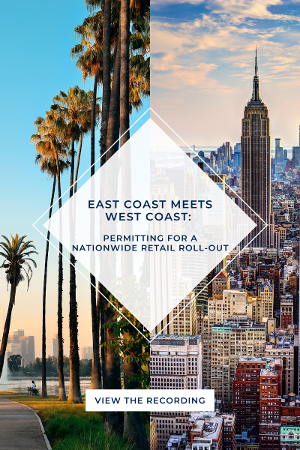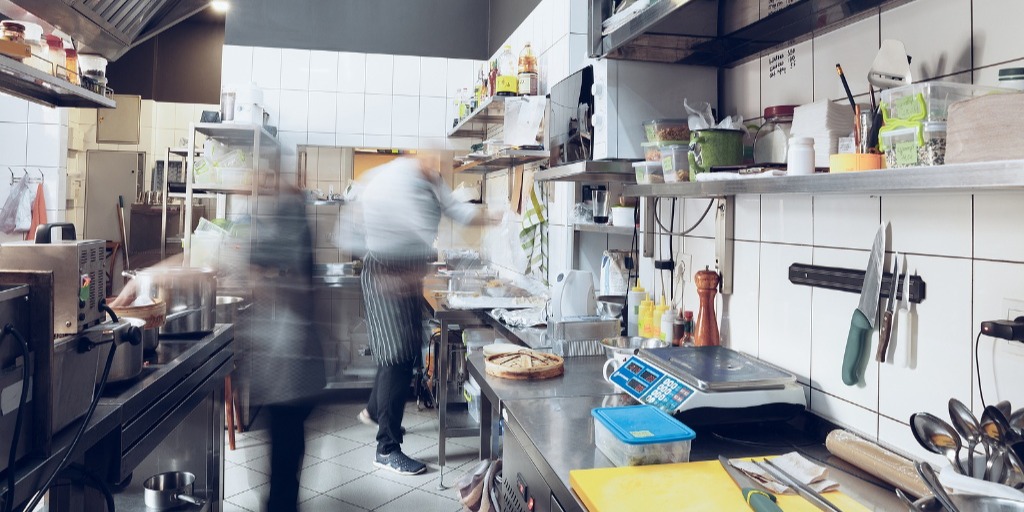The COVID-19 pandemic has disrupted nearly every industry — but few have felt as big of a hit as the retail industry, which has suffered significantly amid shutdowns and evaporated foot traffic.
Even as shoppers return in small numbers, the shift to ecommerce, home deliveries for essential goods, and one-stop shopping has forever altered the course of how consumers buy goods.
As brick-and-mortar retail is diminished, the challenge for building owners and developers is what to do with massive vacant spaces left by former retail tenants. Fortunately, many creative building use conversion solutions have come to light, with former big box spaces making for ideal warehouses and even ghost kitchens (more on that later).
Let's take a closer look at the situation and what the future of big box stores may look like.
New consumer preferences lead to store closures
 Consumers have dramatically altered their normal shopping behaviors in light of safety concerns and lockdowns. A McKinsey & Co. survey found 78% of shoppers have changed stores or the ways they shop since the onset of the pandemic. The firm also observed 45% to 100% growth in the number of consumers who do all their shopping online.
Consumers have dramatically altered their normal shopping behaviors in light of safety concerns and lockdowns. A McKinsey & Co. survey found 78% of shoppers have changed stores or the ways they shop since the onset of the pandemic. The firm also observed 45% to 100% growth in the number of consumers who do all their shopping online.
Though premium retailers like Walmart and Target have thrived amid the pandemic, other big box store operators have been less fortunate.
The shift to ecommerce and curbside pickup has cratered physical foot traffic seen by brick-and-mortar locations. The lack of business has forced more than 14,000 store closures across the U.S., a figure Forbes estimated in mid-November. However, that number continues to rise.
Former retail spaces may be ideal warehouse conversions
As more big box retailers struggle or shutter operations, it's led to a glut of vacant retail space. Such real estate can be attractive because big box stores are often in favorable or strategically advantageous locations and have existing building infrastructure. However, their cavernous nature may make them expensive renovations for non-retail projects.
What's the solution? Increasingly, many in real estate are looking at warehouse conversions.
Though this trend began before the onset of COVID-19, it's taken on new life in the wake of retail closures and pandemic impacts. Interestingly enough, the factors decimating big box retail today may shape the future of the physical spaces such stores once occupied.
Specifically, given the rise in online shopping, vacant big box spaces could make for ideal order fulfillment and distribution centers. Shipping volumes are surging, which is straining existing logistics capacity. Plus, consumer expectations for expedited ecommerce deliveries continue to emphasize the need for capable last-mile facilities.
JLL noted in one article examining warehouse conversions in Australia, most mega stores "... are located within densely populated metropolitan areas, as well as close to large logistics hubs. This is practical for supporting not just rapid delivery, but also the high return rates associated with online purchases."
As it stands, 13.8 million square feet of retail space in the U.S. has been converted to 15.5 million square feet of industrial space since 2017, according to a July report from CBRE. The research found such activity has picked up considerably in 2020. CBRE found that as of July 2020, 59 retail-to-industrial conversion projects were completed, proposed, or underway — well up from 24 in January 2019.
underway — well up from 24 in January 2019.
In explaining the accelerated trend, CBRE also touched on the advantages of former big box spaces: proximity to population centers, connected utilities, existing dock doors, and large parking lots with multiple points of ingress and egress. According to the data, the top five markets for conversion projects were Milwaukee, Cleveland, Chicago, Omaha, and Dallas/Ft. Worth, which together account for one-third of total projects nationally. CBRE noted "dead malls" were driving Midwest activity, but Southwestern and Western markets were also ripe.
However, warehouse conversions are not a one-size-fits-all solution for every problem. For example, Matt Powers, JLL executive vice president of retail and ecommerce distribution, told The Real Deal that warehouses trend toward requiring a 40-foot ceiling, which is not something every vacant big box space can offer. Local zoning regulations also present potential project hurdles as many spaces may require the developer to go though a rezoning process.
Ghost kitchens an innovative solution
While the name may imply otherwise, a ghost kitchen is not a place where you might be able to get a ghoulish bowl of goulash.
Rather, a ghost kitchen is a centralized, brandless food preparation facility that can be used by multiple different restaurants or vendors to fulfill delivery orders.
Similar to retail, the food and beverage industry has experienced considerable COVID-19 disruption, along with shifting consumer preferences. This has led to a sizable uptick in the use of food delivery services and apps.
Enter the ghost kitchen. Restaurants and other food vendors may not have enough space to handle surging delivery orders. To scale up, they can rent space in a ghost kitchen. As CNBC reported, ghost kitchens offer cost advantages over leasing another physical location, including lower labor and rent costs.
In other cases, startups and food truck vendors can leverage a ghost kitchen for its geographic advantages. These businesses may be able to reach more customers via a strategically located ghost kitchen
“[Ghost kitchens] are in really tertiary places – industrial places, car park facilities not used at night,” Ian Hanlon, director of foodservice consulting at JLL, told CNBC. “Essentially they are in very low rent places but within striking distance of targeting the customer.”
The trend of ghost kitchens is gaining popularity and venture capital dollars. Projects are happening across the country, however, as with warehouse conversions, local zoning laws and noncompatible physical building elements can complicate construction plans.
Other uses exist for vacant big box stores
Warehouses and ghost kitchens are leading solutions, but they are not the only ones. Vacant retail spaces can be ideal for a number of other applications and uses, including:
- Climate-controlled storage
- Housing
- Education
- Health care
- Socially distanced office space
- Government
Guide your conversion projects to success with Milrose's help
Whatever the future holds for big box stores, it will most certainly look a lot different in a post-pandemic world where ecommerce reigns and ghost kitchens are a normal thing.
As building owners, developers, and businesses in other industries seek to capitalize on real estate opportunities like conversions, they'll need to pay strict attention to building code and zoning regulations to avoid project delays and save costs.
Milrose’s national team of code, zoning and permitting experts have been helping retailers and property owners navigate complex local building codes and zoning regulations for more than three decades. Contact Milrose today to learn how our experience in commercial space conversions throughout the country will enable us to shepherd your project from start to finish.







